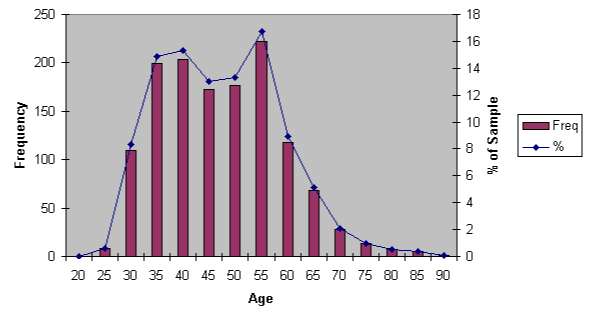Review of the spatial interpolation techniques used for estimating economic coal properties

Kane Maxwell
School of Earth and Environmental Sciences,
University of Queensland, QLD
4072, Australia.
Click here to download guide as PDF
Abstract
Coal resource estimation relies on the spatial interpolation of coal quality properties, such as ash content and density. There are many available spatial interpolation techniques, and over the past decade geostatistical methods such as kriging have been recommended over simpler, historically popular techniques such as inverse distance. Despite this recommendation, it is shown in this study that inverse distance remains the most popular method for interpolating coal quality properties. This study analyses publicly available resource estimation reports from companies which are listed on the Australian Stock Exchange (ASX) from a period spanning 2013 through to 2019. A semi-automated approach to compiling resource estimation reports is undertaken and 53 documents from 30 of the largest companies (by market capitalisation) are compiled. From the analysis of these documents it is shown that inverse distance is used for interpolating coal quality properties in all but one document. The only other reported method was an alternative non-geostatistical method. Further, despite clear ASX rules mandating the report of quantitative reasons for the usage of an interpolation technique, reasons were totally absent or qualitative in all but one resource estimation report.
Keywords: Spatial interpolation, inverse distance weighting, geostatistics, coal resource, JORC
RUSSELL’S CAREER-GUIDING MANTRAS FOR YOUNG AND NOT-SO-YOUNG GEOSCIENTISTS

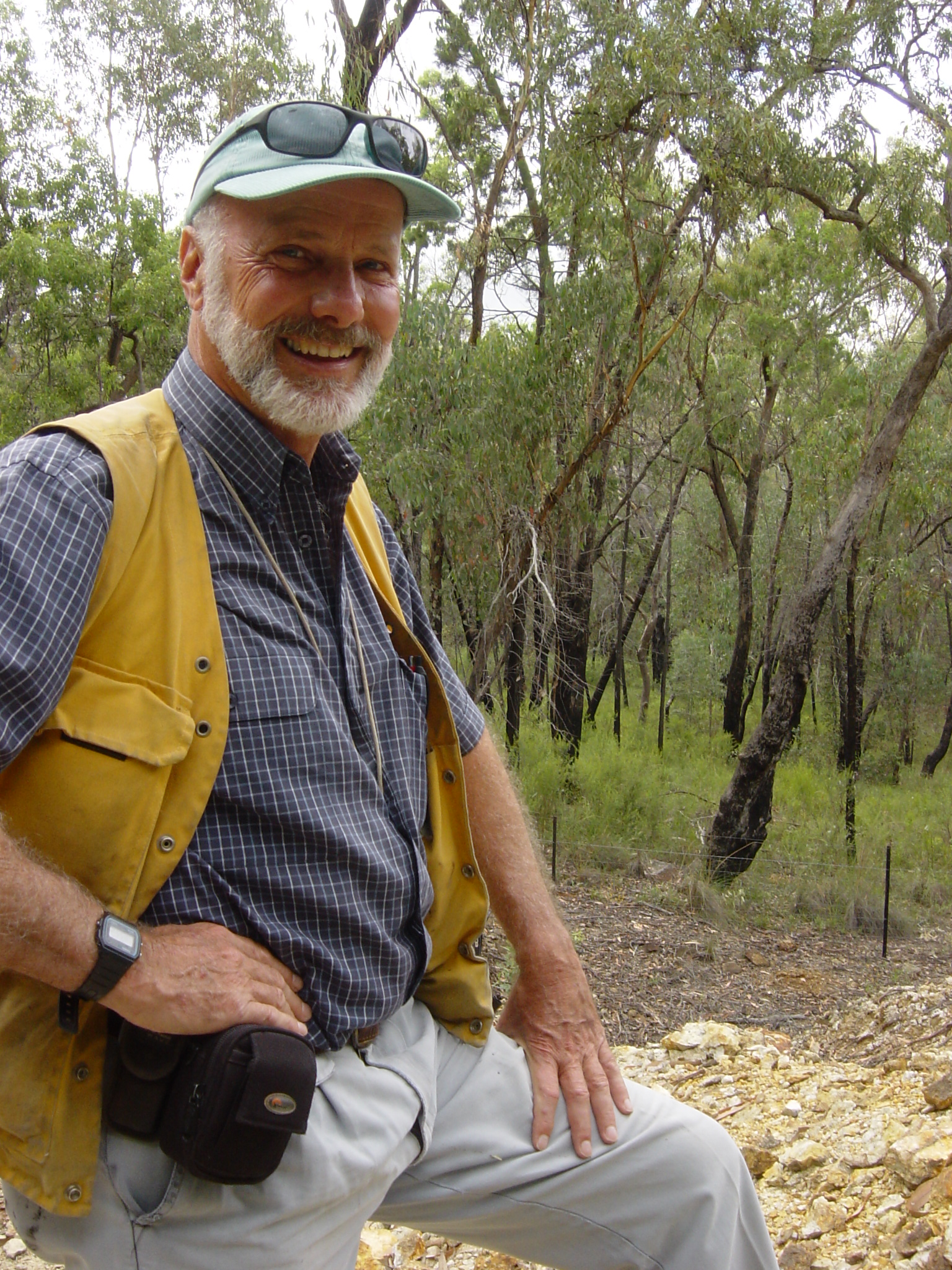 Through Russell Meares’ long career as an Exploration Manager, he has developed these mantras and strategies to motivate himself, and to also share with his team and those geoscientists whom he mentors. In his “spare time”, for many years Russell has been both a strong advocate for explorers through the NSW Minerals Council, and as the Australasian Regional Correspondent for the quarterly newsletter of the Society of Economic Geologists. In addition, he was also a member of the SMEDG Committee for 13 years.
Through Russell Meares’ long career as an Exploration Manager, he has developed these mantras and strategies to motivate himself, and to also share with his team and those geoscientists whom he mentors. In his “spare time”, for many years Russell has been both a strong advocate for explorers through the NSW Minerals Council, and as the Australasian Regional Correspondent for the quarterly newsletter of the Society of Economic Geologists. In addition, he was also a member of the SMEDG Committee for 13 years.
Click here to download paper as PDF
Trust: Always be honest and transparent – lead by example – without someone’s trust you have nothing.
Reputation: No matter in which field of geoscience you work, your reputation is your personal brand – so throughout your career, build your reputation on integrity, trust and respect.
Perceptions: When trying to motivate/convince/negotiate with others, put yourself in their shoes and think of how they are reacting to you and how they are feeling about the issue at hand. I only learnt this approach later in my career, and I found that it gave me a much better understanding of other people’s perceptions and motivations.
Problem solving: When analyzing a complex problem or issue, dig down to find the basic “cornerstone” of the matter – you will usually find one. Until you identify it, you may only be coming up with a temporary “band aid” solution. And when trying to solve a complex problem and you have alternative possible solutions in mind, it helps to critically make a list of all the possible hypothetical decisions you could make to solve the problem, and having done so review these and go with the one which then looks best – rather than go with the most obvious one up front.
Exceed expectations: This is a great one to use whenb you are coaching your team to help them improve their performance. If they aim to exceed expectations, then they will be seen to be delivering more than has been expected of them and it will re-pay them in spades. This is a great motivator when talking to staff about the importance of doing your very best at rehabilitating drill sites – because if you exceed the landowner’s expectations then you will get them onside very quickly – and there are usually very few opportunities to impress landowners, so grab this one with both hands !
Assumptions: Whenever I hear someone say “I assume……”, the warning lights start flashing. This is because sometimes assumptions are based on wrong or incomplete information, so that the decision you make based on that specific assumption may come back to bite you. Just remember that if you “ass-u-me” something …….it can make an “ass of you and me”.
Every journey begins with one step: This one sounds obvious, but I find it very helpful to think this way if a task seems too hard to even make a start. I have refined it to apply when I am talking to geologists about what has to happen before the long journey to make a discovery, by saying “every discovery starts with a single drill hole”.
The hardest journey in life is meeting someone half way: This is a good one if you are trying to resolve differences between two people.
The road to hell is paved with good intentions: I often use this one when hard-working people apologise for not doing something they had hoped to do, or for missing a deadline, and they end up in a “should’ve”, “could’ve” or “would’ve” frame of mind. If you have faith in your ability to make the right decision at any point in time, based on all the information available to you at that time, then never look back and say “I should have done this or done that” when talking about some past decision you made. All you do is dig a big hole for your self-confidence. It helps you keep positive by not looking back, and just keeping on moving forward.
Ownership: Work constructively with your staff so that they set (and have ownership of) their own goals and KPIs, and then give them positive feedback/praise when they do well. This is one of the best ways to reward staff and improve individual performances, as I hear that not many supervisors these days give positive feedback.
You only get one chance to make a first impression: Again, this sounds too obvious, but it is so true. When I am coaching explorers on how to approach landowners regarding accessing their properties, this is always my No. 1 lesson. Whether it is the first phone call or the first face-to-face meeting, you always have to make sure that you and your company give the best (and most open and honest) impression that you can – because that first impression somebody forms of you can set the tone for your future relationship with them.
Go hard or go home: I sometimes mutter this one to myself on the tennis court when I feel I have not been trying my hardest. It can be a great self-motivator !
If you are not living on the edge, you’re taking up too much space: This is one of my all-time favourites which I use to motivate myself. I have it written on a Post-it note which I have in my hard copy diary, and I move it forward every couple of weeks ahead of “today”, so that when I come to that day, it reminds me to lift my game. I came across it some years ago in an obituary written by some grandchildren who were thanking their recently-deceased grandmother for the values which she had passed on to them.
And finally, here’s a great mantra from the legendary American explorer, Sig Muessig: “IQ gets you there, but NQ finds it ” !
VICTORIA HILL MINING RESERVE – Geological & Heritage Guide

Click here to download guide as PDF
Introduction
History
Alluvial gold was discovered in Bendigo Creek in 1851. Victoria Hill was used as a hideout for bushrangers until reef gold mining took leases along the hill in 1854. Small open cut & shallow shaft leases were amalgamated into large, deep operations. The last was overcome by water in 1910 while attempting to sink beyond 5,000’ (1,500 m). Approximately 500,000 oz of gold was won from Victoria Hill, valued at over $1,000,000,000 today.
Geology
The rocks at Victoria Hill are the same as those that make up the majority of central Victoria. These rocks were deposited at the bottom of the ocean (turbidites) approximately 475 million years ago during the Ordovician Period. Rocks of this age around the world from the Early Ordovician were known as Bendigonian until recently.
Tips & Tricks for Geologists

Summary drill logs
Here is a trick for time poor geologists, especially senior ones who rarely log core anymore to (1) get out of the office occasionally (2) be encouraged to look at core (3) be seen looking at core (4) generate a quick summary log. These summary logs are excellent as a visual reference set. They are all generated in Powerpoint and when saved as pdf can be readily emailed.
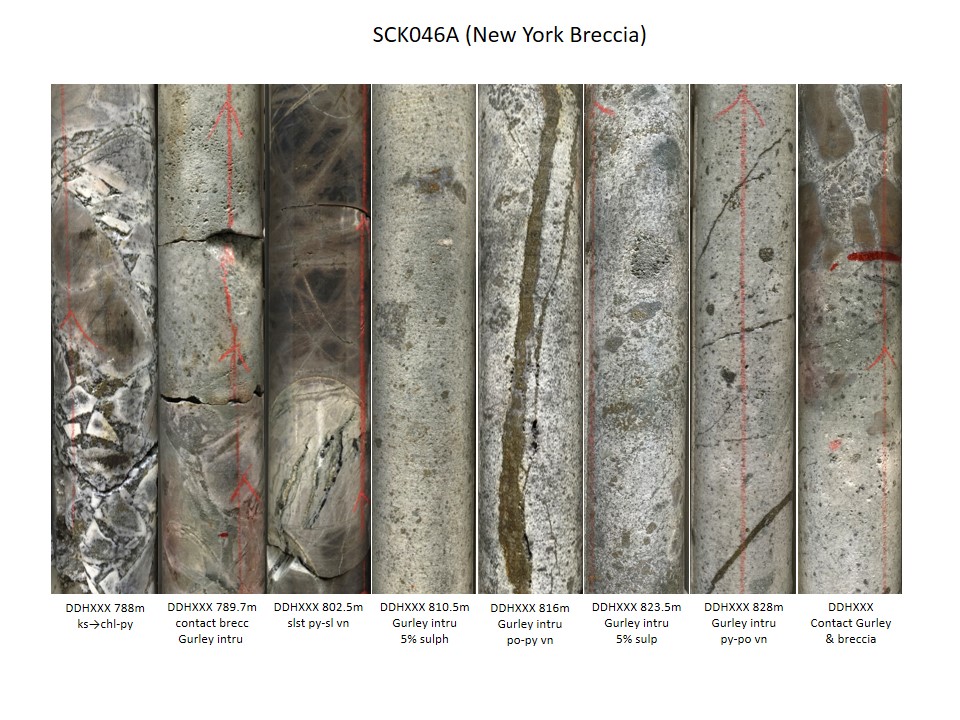
The above image is generated by compositing core snaps of drill core lying in the tray taken with a phone camera. I prefer to capture whole core as it is laid out for geologists rather than half core. I try and take a representative snap every 20m or so with extra pictures in geologically interesting zones. Generally I aim to get 8 photos of NQ representing 80 to 100m per Powerpoint slide (less for HQ and PQ).
Initially there is a bit of trial and error in getting the right image. Most importantly wet the core, avoid photography in bright sun, make sure a core block or metre mark is in the photo, avoid shadows and align the camera with core. Also take the photo at 90°, i.e directly above to the target core to avoid distortion.
The photos are downloaded from the camera, labelled with hole id. depth and description and filed. Importing the images into Powerpoint is a simple drag and drop. Images are cropped, rotated and re-scaled to fit. The picture format option can improve dark photos. A small text box at the base of each core stick has a small description.
I find these photo log particularly useful to go back to when assays are received. They are also useful to refer to when someone queries rock type or alteration. They are excellent for comparing the geology between adjacent holes. Looking at photos is certainly more educational that trying to decipher rock codes and rock descriptions in drill logs. I compliment the photo log with a 1 page graphic log but that’s a trick for another day.
Now that I am familiar with the process of capturing a quality image I can summary log 100m of core in 15-20m depending on how long I dwell on the core. Compiling the images into Powerpoint takes about the same time.
NB: Should you miss a section of a drill hole while on field break, don’t despair. I have found using routine core photos a suitable alternative, assuming they are quality photos, rather than having to drag out stored core.
Mike Erceg
Editors Note: we encourage members to send in their tips and tricks they use in the field.
Wine, vine and rocks – how does it work?

Mathieu Lacorde
MAIG, MSc. Geosciences, AdvDip Viticulture, Oenology.
Structural geologist, Perth, Western Australia
Click here to download paper as PDF
Introduction
Australia is host to some of the oldest rocks on Earth, with zircons from Jack Hills in Western Australia dated over 4 billion years (Valley et al. 2014). The equivalent of these zircons in the world of wine are pre-phylloxera grape vines, before the phylloxera – a sap-sucking insect – devastated vineyards in Europe and other parts of the world in the late 19th century. Australia was only affected in a limited way and is now believed to host among the oldest vines in the world, shiraz vines planted back in 1843 in South Australia.
The wide range of climates and geological formations in Australia defines unique viticultural regions, ranging from cool climate Tasmania to the warmer Hunter Valley in New South Wales. If climate is believed to be the number one influencing factor in growing vines (van Leeuwen et al. 2004), geology is often quoted as a key component of the ‘terroir’, along with soil and topography. This article looks at wine regions in Australia, and across the world, to explore the relationship between geology and wine.
AIG Journal Paper N2018-001, April 2018
Reporting industrial mineral exploration results according to the JORC Code

A. Scogings1, I. Chen2 & G. Jeffress3
1 MAIG, MAusIMM, RP Geo (Industrial Minerals). CSA Global Pty Ltd
2 MAusIMM, GAICD. Non-exec. Member of the VALMIN Committee. CSA Global Pty Ltd.
3 FAIG, RPGeo, FAusIMM, FSEG. Member of the JORC Committee. CSA Global Pty Ltd.
Click here to download paper as PDF
Abstract
Industrial minerals such as graphite are minerals and rocks mined and processed mainly for the value of their physical properties. They are commonly classified according to a diverse range of specifications, including chemical purity, mineralogy, particle size distribution, and density.
The requirements for publicly reporting the outcomes of exploration activities remain underpinned by the requirements of the JORC Code and the listing rules of the Australian Securities Exchange (ASX).
This paper examines the reporting of industrial mineral exploration results in general, with an emphasis on considerations that should be applied to the reporting of flake graphite results.
Industrial minerals including graphite, and more recently lithium minerals, have become the focus of attention for listed exploration and mining companies. This is mainly due to developments in rechargeable battery technologies, driven by growing demand from the emerging electric vehicle market and solar storage sectors.
Consequently, the race has been on to acquire tenure, report larger exploration targets and resources, and to tell the market why one’s project has merits above and beyond competitor projects. Additionally, the need to differentiate and stand out from the crowd, to attract investment is a strong driver for many projects reliant on equity funding.
In Australia, publicly listed companies are required to adhere to the Australian Corporations Act, the listing rules of the Australian Stock Exchange (or other relevant exchanges), and the JORC Code, when releasing public reports on matters relating to Mineral Resources and Ore Reserves. Additionally, members of the JORC parent professional organisations, the AIG and AusIMM, are bound by their respective Codes of Ethics to adhere to the requirements of the JORC Code, when preparing public reports.
As with all other commodities, public reports about industrial mineral (”IM”) Exploration Results (“ER”) require the input of suitably experienced Competent Persons (“CP”) presenting material information in a transparent and material way.
The authors note that review is for information purposes only and does not specifically constitute the opinion of either CSA Global, nor the JORC1 and VALMIN2 committees.
1 While Graham Jeffress is a member of JORC, any comments and views presented are his own and should not be taken as necessarily representing those of the full JOR committee.
2 While Ivy Chen is a non-executive of VALMIN, any comments and views presented are her own and should not be taken as necessarily representing those of the full VALMIN committee.
AIG Notebook: N2017-002
Wavelet Tessellation and its Application to Downhole Gamma Data from the Manyingee & Bigrlyi Sandstone-Hosted Uranium Deposits

A. Wilde1, E.J. Hill2, S. Schmid2 & W.R. Taylor3
1 Centre for Exploration Targeting, University of Western Australia, Crawley, Western Australia
2 CSIRO, Mineral Resources, Kensington, Western Australia
3 Energy Metals Ltd, West Perth, Western Australia
Click here to download paper as PDF
Abstract
Measurement of natural gamma radiation in drillholes can be important for lithology identification, correlation of sedimentary layers between drillholes, in studies of hydrothermal alteration and in geometallurgy inter alia. Traditional interpretation of gamma data for these purposes has typically been by subjective visual analysis. In this paper we discuss the application of a new technique: wavelet tessellation (Hill et al. 2015). Tessellation automatically picks boundaries in depth-attributed numeric data and attributes the area between the boundaries with an average of the data, in this case gamma radiation in counts per second. We show that tessellation of gamma data is a valuable adjunct to traditional visual lithological logging using examples from the Manyingee and Bigrlyi uranium deposits. Tessellation can rapidly and reproducibly resolve important detail in the rocks that is not detectable by the human eye and should be considered an important addition to the toolkit of the mining and exploration geoscientist.
AIG Notebook: N2017-001
Reporting Exploration Results and Mineral Resources for lithium mineralised pegmatites

Andrew Scogings, Ralph Porter and Graham Jeffress
Principal Geologists, CSA Global Pty Ltd
Level 2, 3 Ord Street, West Perth WA 6005, Australia
Click here to download paper as PDF
Abstract
Growing demand for rechargeable batteries has led to industrial minerals such as graphite and lithium becoming the focus of attention for exploration and mining companies. Consequently, the race has been on to report exploration targets and Mineral Resources.
The requirements for publicly reporting the outcomes of Australian company activities remain underpinned by the requirements of the Australasian Code for Reporting of Exploration Results, Mineral Resources and Ore Reserves (‘the JORC Code’) and the listing rules of the Australian Securities Exchange (ASX).
As with all other commodities, public reports about lithium exploration targets, exploration results and Mineral Resources require the input of suitably experienced Competent Persons presenting material information in a transparent way.
This paper examines lithium production markets and prices, reporting of exploration results, special considerations that should be applied to the reporting of pegmatite Mineral Resources and issues around Competence for the public reporting of lithium exploration results and resources.
Where Have All The Geoscientists Gone
 Michael Leggo | michael.leggo@boral.com.au
Michael Leggo | michael.leggo@boral.com.au
Paper initially presented at the AIG Annual General Meeting, Sydney, 23 May 2002.
Click here to download paper as PDF
INTRODUCTION
In accepting the opportunity to talk at the AGM, I had rather naively hoped to discover that the general pessimism about the current state and foreseeable future for geoscientists was exaggerated. Regrettably, in researching this topic, I have had to face up to some unpalatable realities. I plan to comment on these, but then to suggest some hopefully appropriate courses of action.
The more I delved into the topic, the more the information and questions mounted. Being fortunate enough to still be in full-time employment, I regret I have not had time to be as thorough as I would have liked. I particularly want to thank Ian Neuss, Andrew Waltho, John Kaldi, Colin Ward, Bryan Smith, Ken Harvey and John Bryan for helping to reduce some of my deficiency of knowledge. I should also state that I have shamelessly lifted and used information and ideas from wherever I could get them. About the only thing that is my own work is probably the actual synthesis.
I believe that what geoscientists are facing is not just the by now familiar perturbation or cyclical downturn driven by world economic conditions or poor commodity prices, but rather a much larger evolutionary change that commenced more than a decade ago.
REALITIES
The realities are:
- The developed world economies have evolved from being industrial- to information- and service-based.
- On average the real return on capital of operating mining companies (top 50) has been only 5 percent over the last 20 years, ie. below the cost of capital, thus resulting in a loss of shareholder wealth (ignoring the 7000 or so junior companies, with a normal three-year life span, that have come and gone in this time).
- Combined market capitalisation of the mining sector has declined to about 1% of the total world capital market.
- The capitalisation of resource stocks as a percentage of the ASX has fallen over 10 years from 37% to 14%.
- Ironically the reduced economic contribution by mining is due in part to the superb efficiency of this sector – a level of profitability has been maintained by increased mining efficiency (declining costs of production and increased production volumes), but at the cost of making the supply situation worse; there has been a long-term average decline in metal prices of around 2-4% per annum in real terms.
- This has been compounded by political and modern business cycles being much shorter than the normal mining cycle, viz. once a mine goes into development it is almost impossible to react to changing economic circumstances by changing plans without incurring tremendous losses; mining is a “price taker”.
- In developed countries, public attitudes and government policies toward domestic resource industries have become neutral or unsupportive, ie. there has been a reduction in direct and indirect “subsidies” by society in those countries.
- There has been a major shift of exploration, development and production to the developing world and this is part of the larger globalisation phenomenon. This shift has resulted from the pull exerted by under-explored countries, their improved attractiveness as they have moved to market-driven economies, and the apathy (sometimes hostility) to the industry in the developed world.
- Global mineral exploration more than doubled from 1991 to 1997 peaking at US$5.2B before falling to a low of US$2.2B in 2001.
- The ratio of exploration expenditure to the gross value of metal production in the 1990s was 3.6% compared with an historic average of 2.4%, and 1.1% in the 1950s, ie. the 1990’s were anomalous.
- Globally there have been static or declining rates of giant or world-class deposits discovery, particularly when pro-rated against levels of exploration expenditure – average discovery costs have tripled in the last 30 years.
RESULTS
The results are:
- The poor rates of return for mining fall well short of those offered by other market sectors and also the thresholds demanded by shareholders and fund managers, ie. mining faces intense competition for capital from the “new economy” sectors.
- There has been a loss of confidence in the exploration process as a cost-effective means of achieving acceptable company growth.
- A dramatic fall has occurred in mining-related capital raising and in the number of new floats since 1997 in all the major centres for mining finance.
- In constant 2000/2001 dollars, mineral exploration in Australia is at a 20 year low ($683.3M last financial year; down 40.5% on the 1996/97 peak (Figure 1), and even then this is misleading since expenditure is mainly on “brown-field” exploration); Australian exploration spending over the past decade has directly followed the global mineral exploration pattern (Figure 2).
- Consolidation of the industry has occurred through mergers and acquisitions (US$128B in the last six years) with the merged companies inevitably reducing their exploration effort (by a factor estimated to be of the order of 2+2 reducing to 1.5).
- Fairly robust estimates put the number of geoscientists working Australia (in all fields) in 1996 at around 5200. Currently there are approximately 2600, with about 14% of these being unemployed. It is important to look at the distribution of these geoscientists to understand the effect of the reduction in mineral exploration. Figure 3 is a best estimate based on the Directory of Australian Geoscientists, but the percentages appear to be low for Coal and Government.
- Geoscience as an academic discipline in Australian universities has been diluted, with geology now most commonly found in mixed administrative units, eg. together with other physical or biological sciences, geography or environment.
Figure 1. Australian mineral exploration expenditure 1970-2001
Figure 2. Global mineral exploration expenditure
Figure 3 Geoscientists employment by sector (by %)
- There is currently a “trough” in undergraduate numbers and students are commonly undertaking double degrees (thus keeping their options open?)
- The Resources industry is dominated by Minerals; the high attrition in mining colours the perception of geoscience as a whole and “blocks” entry into the Petroleum and Coal industries because of late specialisation in these fields in the undergraduate or post graduate process. The workforce in the oil and gas industry is aging and employee numbers are dwindling through attrition – there is a serious shortage of young geologists.
- In the Coal industry in the period from the mid 1990s to the present, coal production in Australia has increased; the number of geologists has also increased slightly to the current level of about 110 despite actual coal exploration expenditure falling by 41%. There is a significant drop-out rate after 1-2 years of employment and there is a shortage of new graduates.
- The principal federal government geoscientific body, Geoscience Australia, appears to have changed over time in its scale and emphasis, and it has reduced its capacity to produce basic geoscientific data of practical use to the mining industry. However, federal spatial data is now available free or at the marginal cost of transfer.
- State Government mineral resources agencies vary markedly in their approach to producing and providing information to promote exploration in their States, from a number of aware, pro-active and well-funded bodies to those that are diminishing and ineffective. This variation does not apply to their ability to act as guardians of geological data generated by the private sector, which is to world’s best standard.
NEGATIVES
The negatives are:
- There is serious potential for a major negative impact on Australia’s minerals export earnings in the longer term (2000/01 value of exports of minerals was $40 billion excluding iron ore, and $56.4B including iron ore and petroleum which equates to 64% of total commodity exports). These earnings contribute substantially to the nation’s standard of living; note however the bias engendered by thinking that mining is synonymous with the production of high unit-value base and precious metals.
- It is likely that there is a partitioning of the geoscientific workforce on the basis of age, “the grey divide”, which unless arrested soon must lead to a lack of continuity and the loss of a major resource – a vast bank of knowledge and expertise gained through experience (and thus the loss of mentoring).
- Many geologists who were once long-term corporate and government employees are now temporary contractors or consultants – they represent surge capacity to be employed at peaks of cycles, and are currently under-employed.
- There is a vicious circle where the “unpopularity” of geoscience (and science generally) leads to lower entry requirements at universities which leads to a further decrease in appeal (and one supposes to a reduction in the average calibre of earth science students notwithstanding that for some it will simply be the field of choice).
- Presumably there is or will be an iterative effect unless counteractive steps are taken whereby reduced industry activity, reduced discretionary R&D funds and reduced student numbers will adversely affect research spending (universities, CSIRO) curtailing Australia’s current exploration leadership role.
POSITIVES
The positives are:
- The mining industry is not in a terminal phase, ie. unless there is catastrophic global disruption, and despite increasing re-use, re-cycling and substitution, metals and mineral commodities will continue to be in demand – mining is essential to society.
- Australia has been able to maintain its position as the most favoured single country in which to undertake mineral exploration in spite of a reduction as a proportion of global mineral exploration spending from around 20% in the early to mid 1990’s to 17.5% in 2001 (Figure 4).
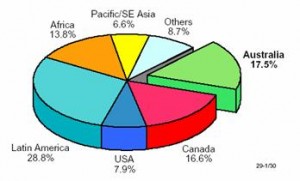
Figure 4. Share of global exploration expenditure (2001)
- As a consequence of Federal and State/NT Government programs, Australia has one of the best, if not the best, geoscience information bases in the world. Collectively, the governments have spent more than $450 million in the period 1990-2000 on precompetitive geoscience information, mostly in support of minerals exploration.
- The disposal of some non-core assets by majors to juniors has created new opportunities and, in some cases, cash flow for the junior company to support exploration.
- There are some limited early signs of increased investor activity, particularly in Canada, but even if this is sustained we are firmly past the mining and exploration “glory years” (arguably the three decades from 1950 to the early eighties).
- Majors appear to be increasingly conducting at least some of their exploration through strategic alliances and joint ventures with junior exploration companies.
COURSES OF ACTION
Courses of action:
If the mining industry is to continue to underpin Australia’s standard of living, it has to be comprehensively competitive globally and a major effort is required on a number of fronts. The following represents some of the actions required:
- Australia must enhance its current preferred status for mining and mineral exploration by
- rapidly finding economically and socially viable solutions to land access difficulties following the Native Title Act and the High Court’s Wik decision in 1996
- introducing tax incentives including a tax credit similar to the Canadian “flow-through shares” scheme of the 1980’s and revived in 2001, and some form of R&D recognition
- increasing the generation and availability of public geoscience data through continued support of, and focused practical application by, the Federal and State mineral resources agencies
- overcoming the lack of progress in resolving environment/regulatory issues.
- Australia must maintain at least a leading and preferably a dominant position with respect to mining and exploration technologies by
- campaigning to enhance the public perception of science and engineering as professions
- sustained support of a rational framework of properly resourced teaching centres or “collectives” at both undergraduate and post-graduate level
- long-term commitment and funding, including industry participation, in our research centres (universities, CRCs, CSIRO) for applied exploration, mining and mineral processing research
- a revival of R&D funding to support research into materials science (Editor: see also “Federal Government to Prioritise Technology Research”, in this issue).
- concentration by some smaller companies on locating niche opportunities, eg. deposits that are too small, or for end products that in a market sense are not big enough, for the major companies.
Lobbying of Federal and State Governments must concentrate on the impact that the loss of export earnings from mining will have on the Australian economy, not on the loss of geoscientists; I understand that the former is indeed AIG’s approach.
A promising development is the proposed Minerals Industry Action Agenda which has been prepared and submitted to the Minister for Industry, Tourism and Resources; this has the very strong support of the majority of industry associations and there is optimism that this Action Agenda will be one of those selected for consideration by the Prime Minister and potentially Cabinet – a decision is due in July.
At the State level, a WA Ministerial Inquiry will seek submissions from major industry bodies regarding reasons for the reduced levels of private investment in greenfields mineral exploration and recommended actions to achieve a sustainable future.
WHERE HAVE ALL THE GEOSCIENTISTS GONE?
So, finally, where have all the geoscientists gone?
- In North America 3% of recent undergraduates have entered the minerals industry; 19% have joined environmental consulting firms (Figure 5).
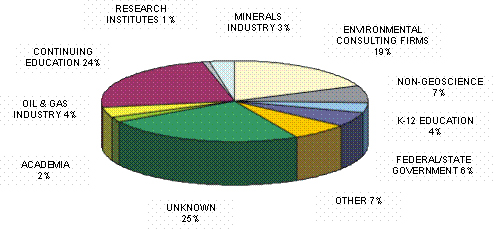
Figure 5. Employment trends of recent undergraduates
(Source American Geological Institute)
- The older (45-50+?) geoscientists, presumably partly because of their personal commitment and time invested in the profession and partly as a result of the difficulties faced in competing for employment in a different field, have largely remained within the industry – often in contracting, consulting or in more entrepreneurial roles such as putting together IPOs; or they have retired (often early).
- An unquantified number of younger professionals have transferred to environmental geoscience, hydrogeology and geotechnical work.
- In Perth, where 36% of our national geoscientists reside, 65% of the generally more senior industry professionals made redundant were re-employed, but 48% of these changed industry; 25% are now self employed, in part contracted back to their original companies; 10% remain unemployed.
- A large proportion of the 2600 “missing” industry professionals are of a mixed but generally younger age where, deterred not only by job insecurity but also in some cases compounded by the desire for a stable location, they have left and pursued alternatives, often after retraining. It should be noted that a proxy age distribution (Figure 6), based on the individual’s year of completing high school as recorded in the Directory of Australian Geoscientists, is rather paradoxical when considered against that expected by observation in that it is not as skewed as expected. Anecdotally the list of new occupations includes child bearing and rearing, school teaching, day trading, investors, newsagents, professional photography, park rangers, real estate agents, financial advisers, stockbroking analysts, growing plantation trees, re-filling and re-selling ink-jet cartridges, handyman, sports store manager, GIS applications (including marketing), information technology, viniculture.
Figure 6. Approximate age distribution of remaining geoscientists
REFERENCES
Particularly plagiarised references:
Jaques A.L. and Huleatt M.B. 2002. Australian Mineral Exploration : Analysis and Implications. Bull. AusIMM, 1, 45-52
Snow G.G. and Juhas A.P. 2002. Trends and Forces in Mining and Mineral Exploration. Soc. Econ. Geol., Special Publication, 9, 1-16
Received: May 2002
Published: July 2002
Copyright The Australian Institute of Geoscientists, 2002




